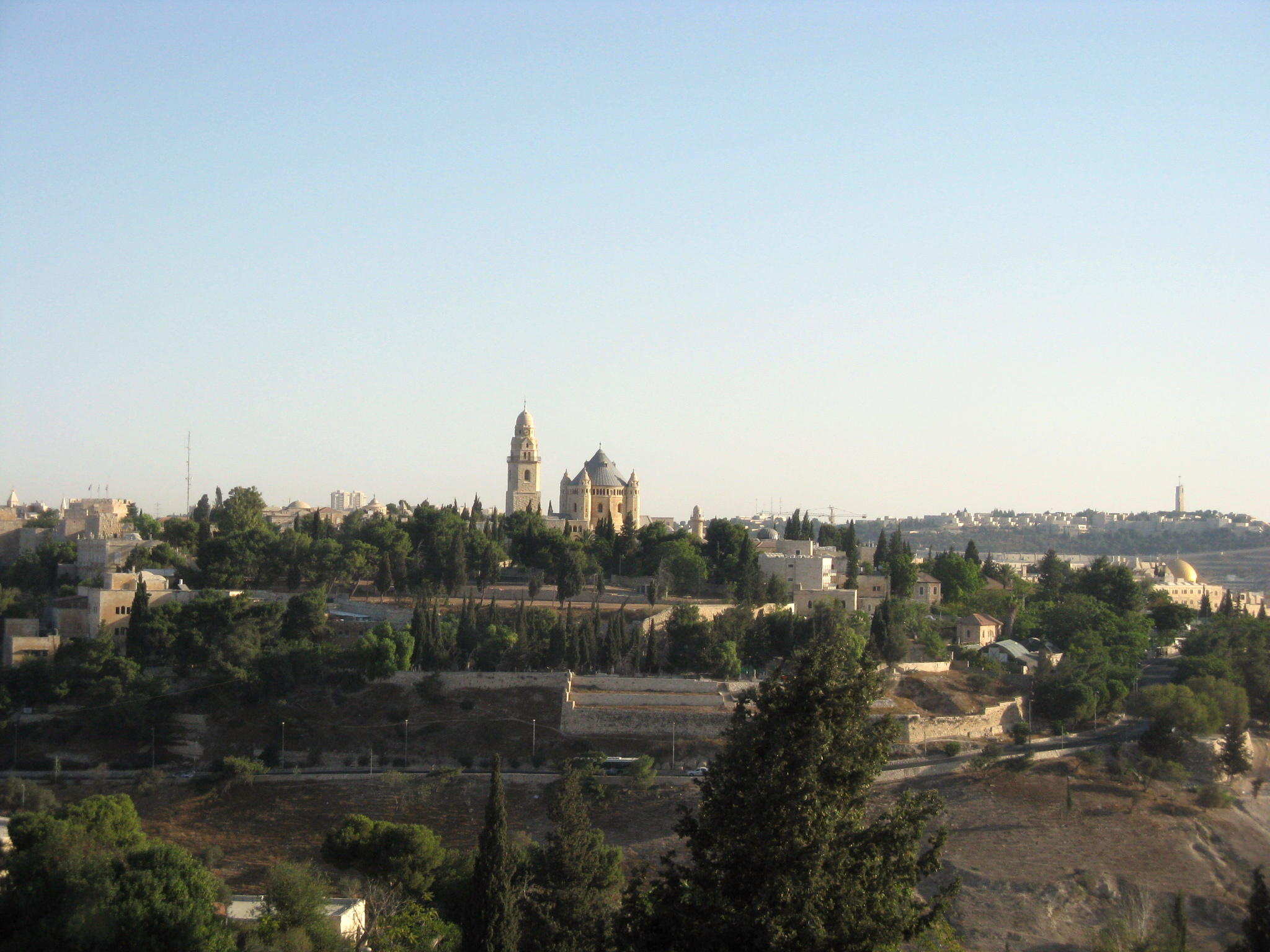
September 2008

A trip to Jerusalem is not exactly a holiday as such; hugely enjoyable, but also an adventure and a challenge. We tried very hard to balance activities between the various religious, ethnic and political groups, so if we felt our sympathies swaying too much in one direction, we immediately redressed the balance! It seems to me that virtually every group has been oppressed over the centuries, and most have also been the oppressor. It is without doubt the most complicated place I have ever been, and while it may be that a solution seems as far away as ever, in other ways it is a miracle it as peaceful as it is.
The area is very mountainous, the terrain very hilly. It seemed to me that everywhere we went was up! Despite our singing about a 'green hill' at Easter, there is not a great deal of green. The picture on the left shows the view from our hotel bedroom window.
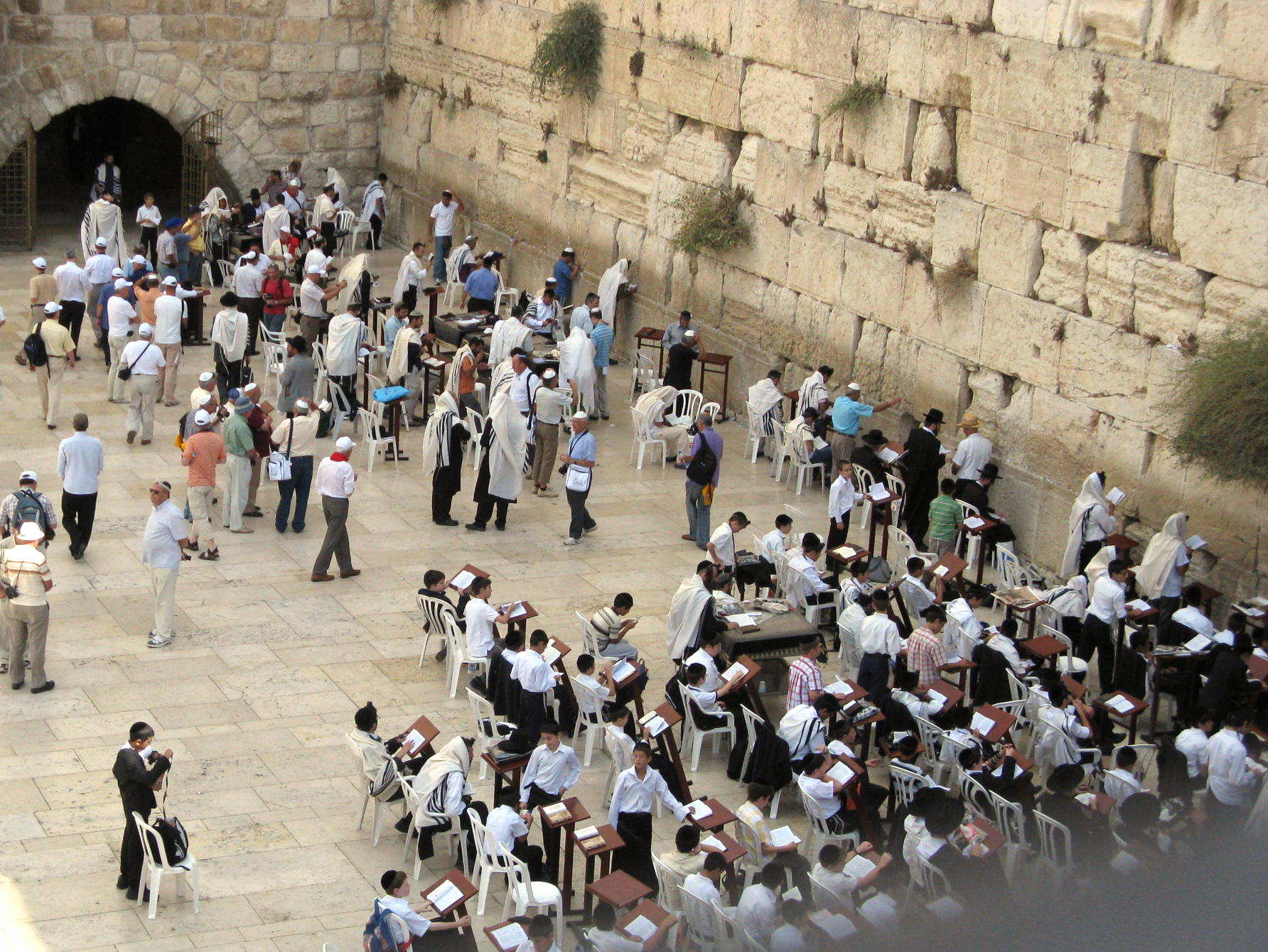
The Jewish experience:
The Jews were expelled from Jerusalem and the city
destroyed by the Romans following the ill-advised Jewish uprising in 70 AD.
While small groups of Jews have survived, they only moved back in
significant number in the late 19th Century. Their official
reclamation of half of the Old City in 1948 was the end of almost 1900 years
of banishment. When the Romans destroy something they do it pretty
effectively, and the only remains of the Temple, the most sacred and
precious place for Jews, is one bit of wall
– The Western Wall – the most important religious place for Jews in Jerusalem.
Interestingly, we thought the provision of female space for praying was an
adv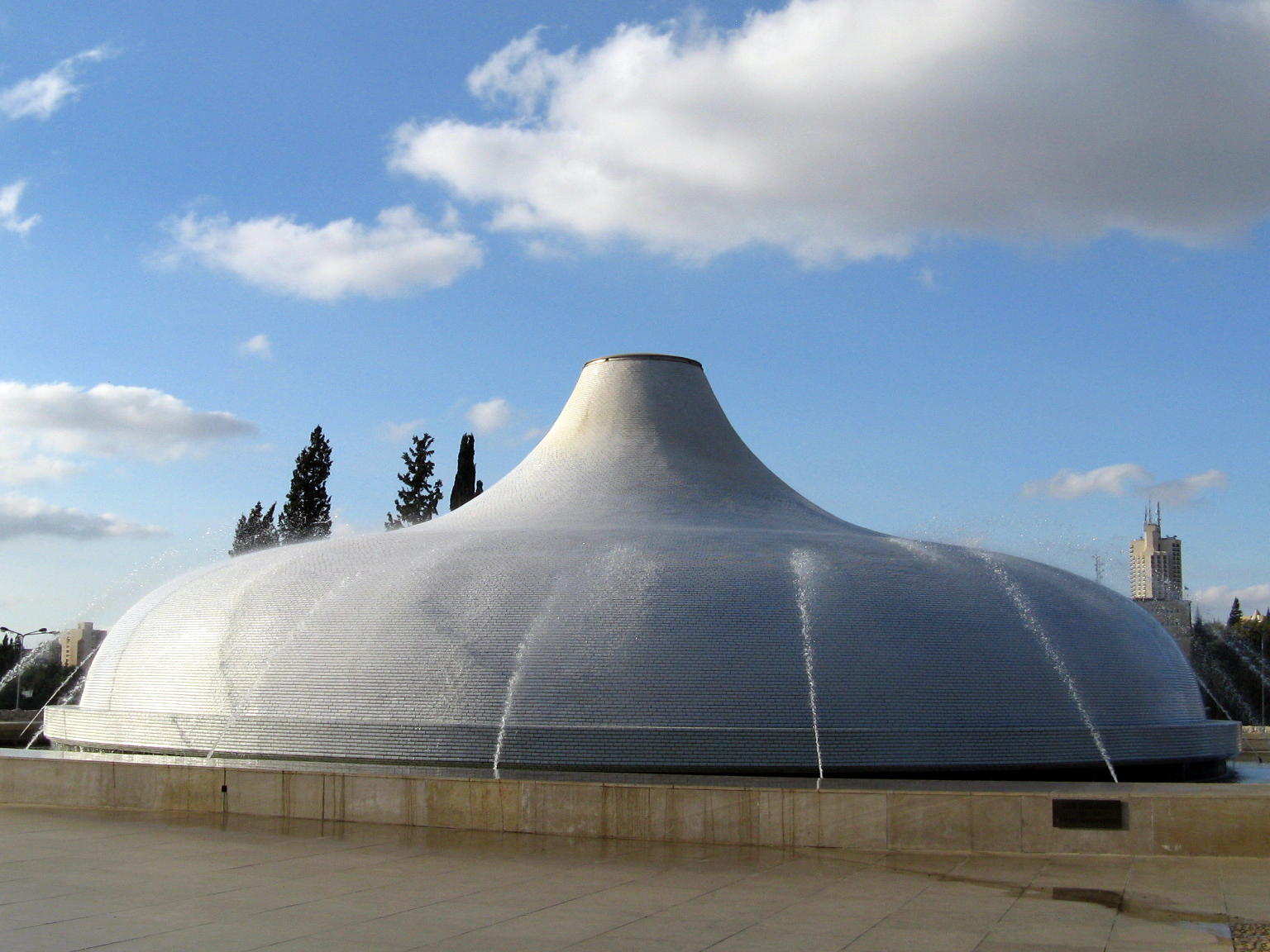 ance, but subsequently discovered that in the 1920s there was no gender
divide to praying at the wall.
ance, but subsequently discovered that in the 1920s there was no gender
divide to praying at the wall.
We visited one excellent museum detailing the stories of Jews living in desperate poverty in Jerusalem prior to1948 and also the stunning Yad Vashem, the museum of the Holocaust. Another example of the audacious design Israelis can embrace was our visit to the Shrine of the Book, the new museum dedicated to the Dead Sea Scrolls. This extraordinary cone-shaped building has water constantly sprayed over it. Of course, in an area where water is politics, perhaps this says more than we are immediately aware of.
The Arabic experience:
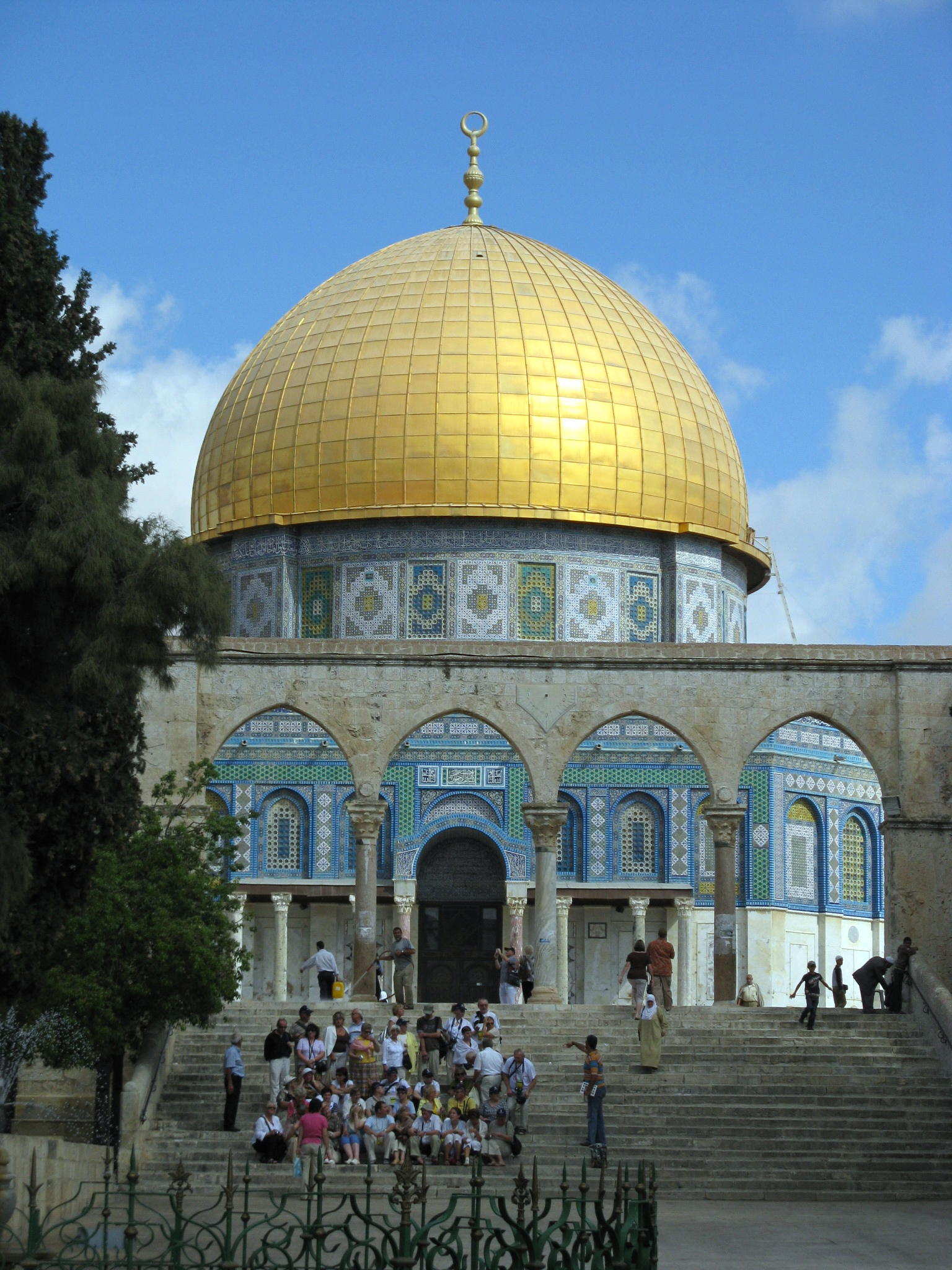 For
much of the last 1000 years the Arabs have been the commanding force in
Jerusalem, but no longer. The Arab quarter in the Old City is the busiest,
noisiest, most cramped and clearly the poorest. Going out into East
Jerusalem you suddenly find yourself in a third world city as opposed to the
Westernised and highly affluent West Jerusalem. Our trip to
Bethlehem was an eye-opener. We went on an Arabic bus and were stopped at
the Israel/Occupied Territories checkpoint by Israeli soldiers both ways.
Going into Bethlehem they took exception to a western-dressed Arabic girl,
while on the way back we were forced to wait half an hour in the desperately
hot sun while they checked Arabic ID papers, eventually pulling a mother and
her baby off the bus for not having correct papers for travel to Jerusalem.
It is hard to see how daily subjection to these ‘pass laws’ is not gong to
continue to build tension and hostility toward the occupying force.
Bethlehem itself is very poor, a hard town with no shade and not a trace of
greenery. The entire population is trading at the very lowest level –
including women sitting with a few radishes or a pile of sultanas. We were
the only westerners we saw in the main town, and we were not harassed at all
until we hit Manger Square. Suddenly there were trees, there was wealth and
there were thousands of tourists, who seemed to have appeared through a hole
in the space-time continuum. Frankly, most of the visitors didn’t see a
solitary thing of the real little town of Bethlehem.
For
much of the last 1000 years the Arabs have been the commanding force in
Jerusalem, but no longer. The Arab quarter in the Old City is the busiest,
noisiest, most cramped and clearly the poorest. Going out into East
Jerusalem you suddenly find yourself in a third world city as opposed to the
Westernised and highly affluent West Jerusalem. Our trip to
Bethlehem was an eye-opener. We went on an Arabic bus and were stopped at
the Israel/Occupied Territories checkpoint by Israeli soldiers both ways.
Going into Bethlehem they took exception to a western-dressed Arabic girl,
while on the way back we were forced to wait half an hour in the desperately
hot sun while they checked Arabic ID papers, eventually pulling a mother and
her baby off the bus for not having correct papers for travel to Jerusalem.
It is hard to see how daily subjection to these ‘pass laws’ is not gong to
continue to build tension and hostility toward the occupying force.
Bethlehem itself is very poor, a hard town with no shade and not a trace of
greenery. The entire population is trading at the very lowest level –
including women sitting with a few radishes or a pile of sultanas. We were
the only westerners we saw in the main town, and we were not harassed at all
until we hit Manger Square. Suddenly there were trees, there was wealth and
there were thousands of tourists, who seemed to have appeared through a hole
in the space-time continuum. Frankly, most of the visitors didn’t see a
solitary thing of the real little town of Bethlehem.
There are many small mosques dotted around Jerusalem, but the two big ones are on old Temple Mount – El Aquba, the everyday working mosque, and the magnificent Dome of the Rock, one of the holiest places in Islam. Sadly we were not able to actually go into either (possibly because it was Ramadan). Another example of the consistent irritation of occupation was the fact that machine-gun wearing Israeli soldiers ‘guarded’ both the mosques.
The Christian experience: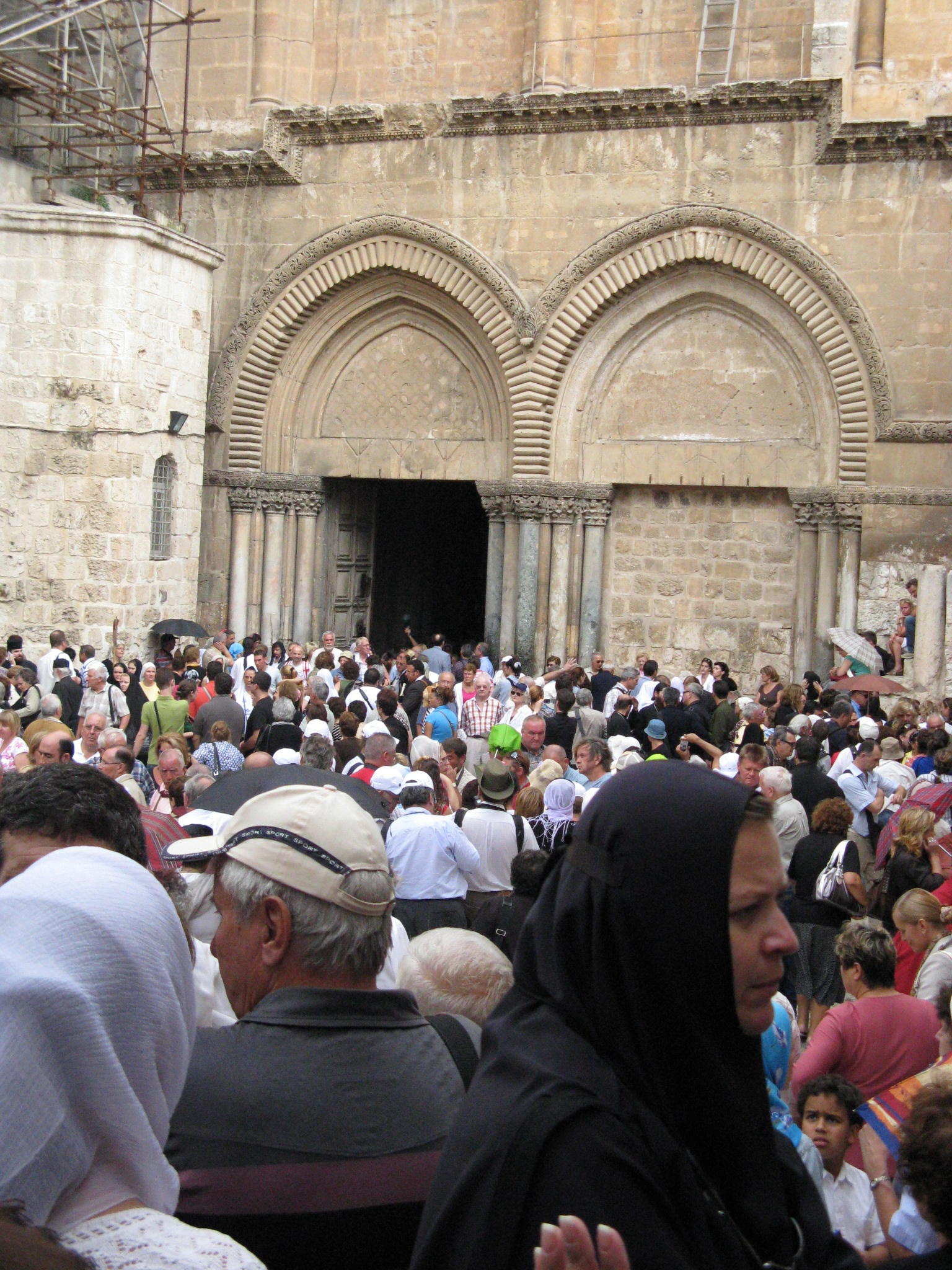
Over the week we visited the places where (allegedly): Jesus was born, Mary spilled breast milk on the floor, the Last Supper took place, Jesus was arrested, whipped, fell, nailed to a cross, died and resurrected, Mary received the severed head of St James, Mary died and Mary is buried. Admittedly there are alternative sites for most of these events, but as far as I am concerned, if St Helena identified the sites, that is good enough for me! We went into churches that were Catholic, Franciscan, Benedictine, Greek Orthodox, Russian Orthodox, Armenian Orthodox, Coptic and Lutheran. Rome may be a religious centre but it is all Catholic, this is a bewildering mixture of churches, religions and sects. The shrines themselves range from the ludicrous Holy Sepulchre (the fit thing we saw a pilgrim prostrating herself on the Stone of Unction the second someone driving a tractor past us and into the church!) through to the sublime Armenian Cathedral of St James.
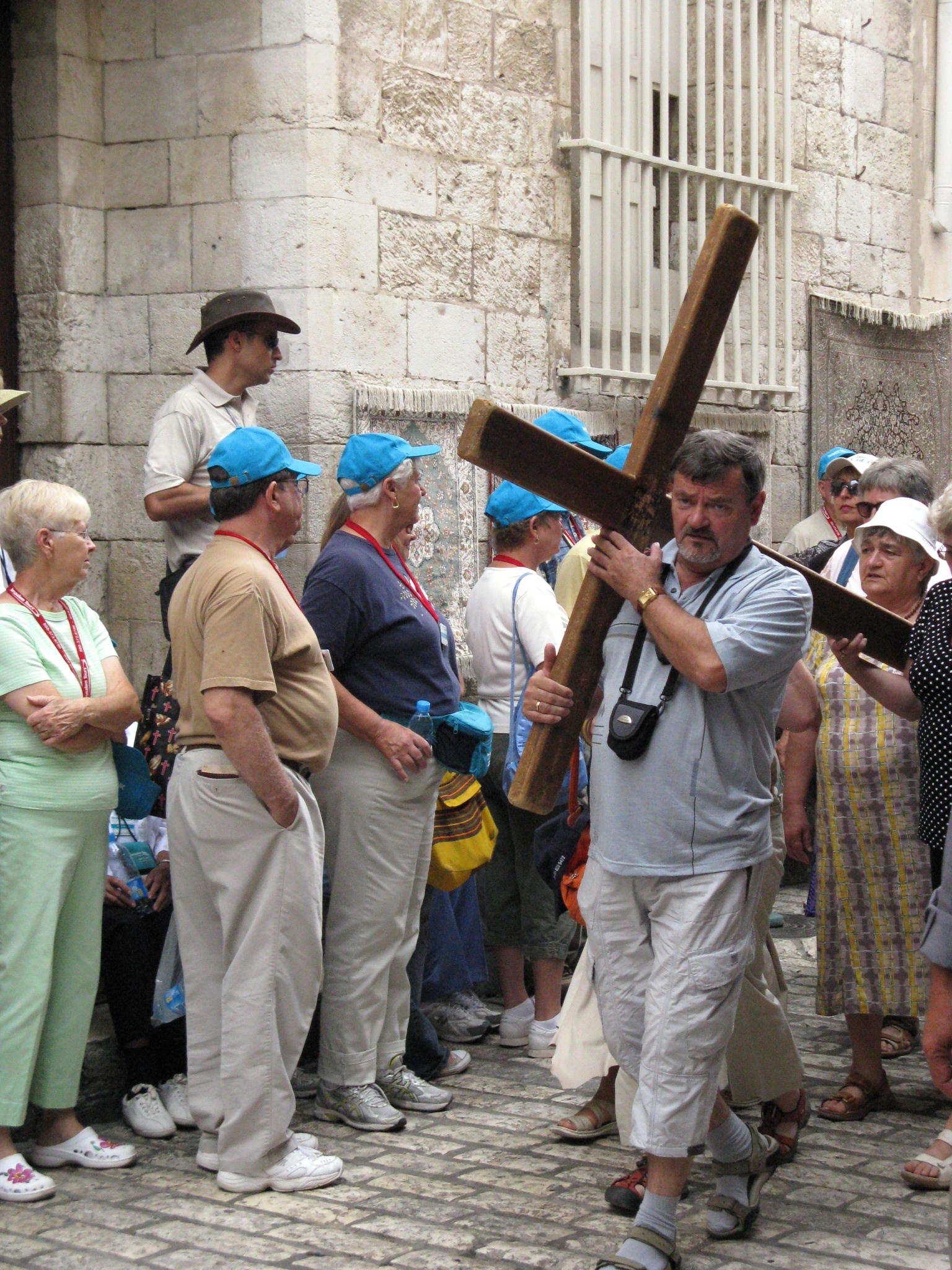 Unattached
westerners were very much in the minority, and we spent most of our time
trying to avoid large tourist groups being herded through the tiny lanes of
the old city. While many were American, we heard most languages over a week
and the tour groups appeared to come from every continent. While I am sure
many in these groups were genuine pilgrims, the way in which tourists went
straight for the photo-opportunity without exploring even a few yards off the course set by the guide was
at least disappointing. As an example, in a packed Holy Sepulchre we were
the only people in St Helena’s 4th century chapel.
Unattached
westerners were very much in the minority, and we spent most of our time
trying to avoid large tourist groups being herded through the tiny lanes of
the old city. While many were American, we heard most languages over a week
and the tour groups appeared to come from every continent. While I am sure
many in these groups were genuine pilgrims, the way in which tourists went
straight for the photo-opportunity without exploring even a few yards off the course set by the guide was
at least disappointing. As an example, in a packed Holy Sepulchre we were
the only people in St Helena’s 4th century chapel.
The entire city is an archaeological site. The Crusader Church may seem pretty old, but go into the crypt and there will be the remains of a 5th and 3rd century church and possibly Roman as well. The lovely modern Dormition Abbey is a very good example of this, being built on a succession of earlier churches.
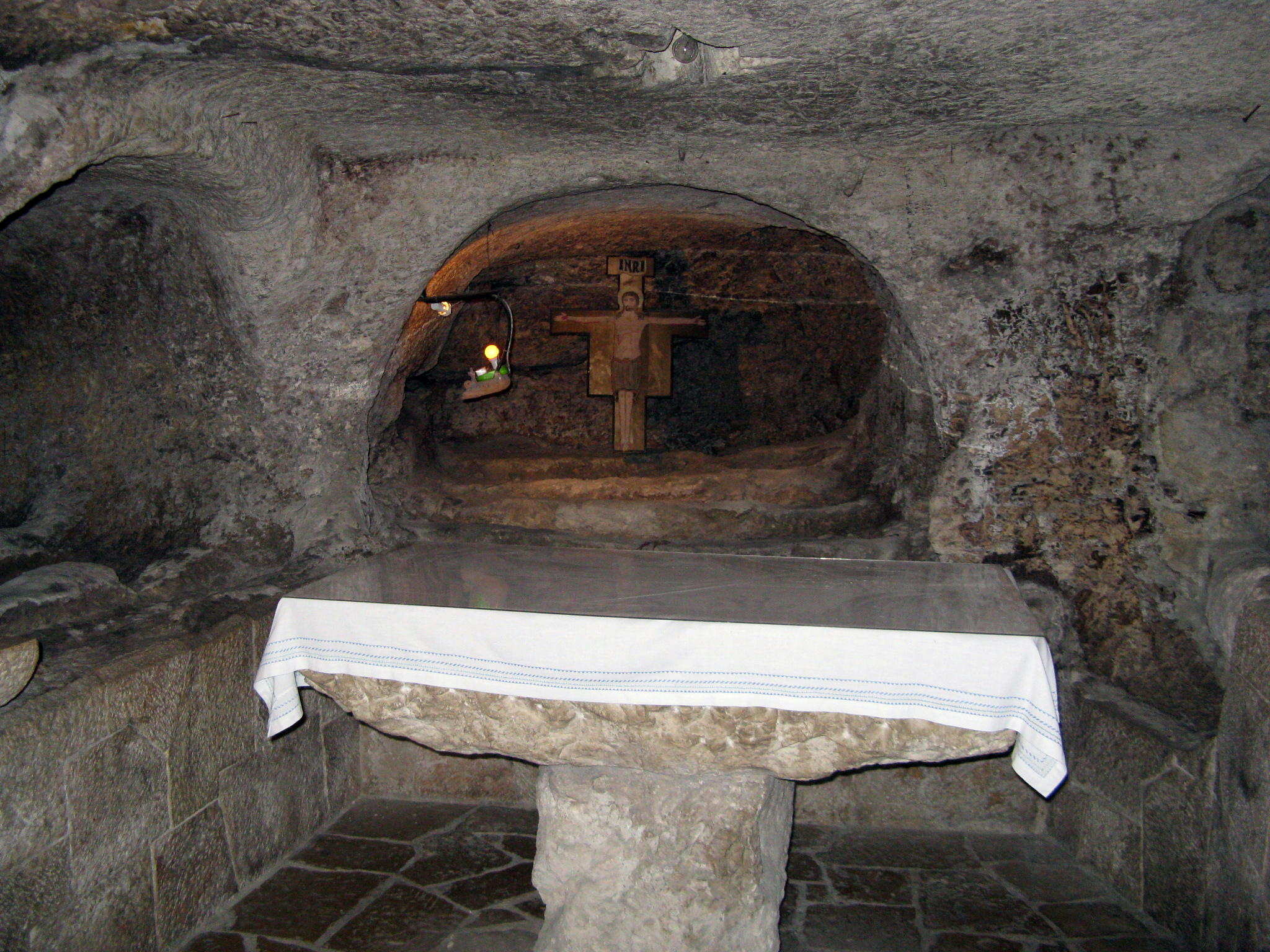 The
Roman experience:
The
Roman experience:
The famous image of Jerusalem taken from the 6th century mosaic of Madaba shows a central street dominating the centre of town. Archaeologists testing the validity of this image went searching for it and found The Cardo, a fine, wide Roman thoroughfare running through what is now the heart of the Jewish quarter. Unlike the UK you can get down and touch the pillars and walk on the stones laid around 130 AD. Several parts of the Old City still have the Hadrian laid stones, but you would only I know it if you read your guidebook. You can also visit a pre-Hadrian water cistern, and see the subsequent building by Hadrian enclosing the cistern as part of his new City. I also enjoyed the archaeology at The Church of the Holy Nativity in Bethlehem. There the 4th century mosaic flooring is preserved, together with other parts of both the Constantine church and the 5th century study of Jerome. This is a very old City, and there can be few centuries not represented in some way within the City walls.
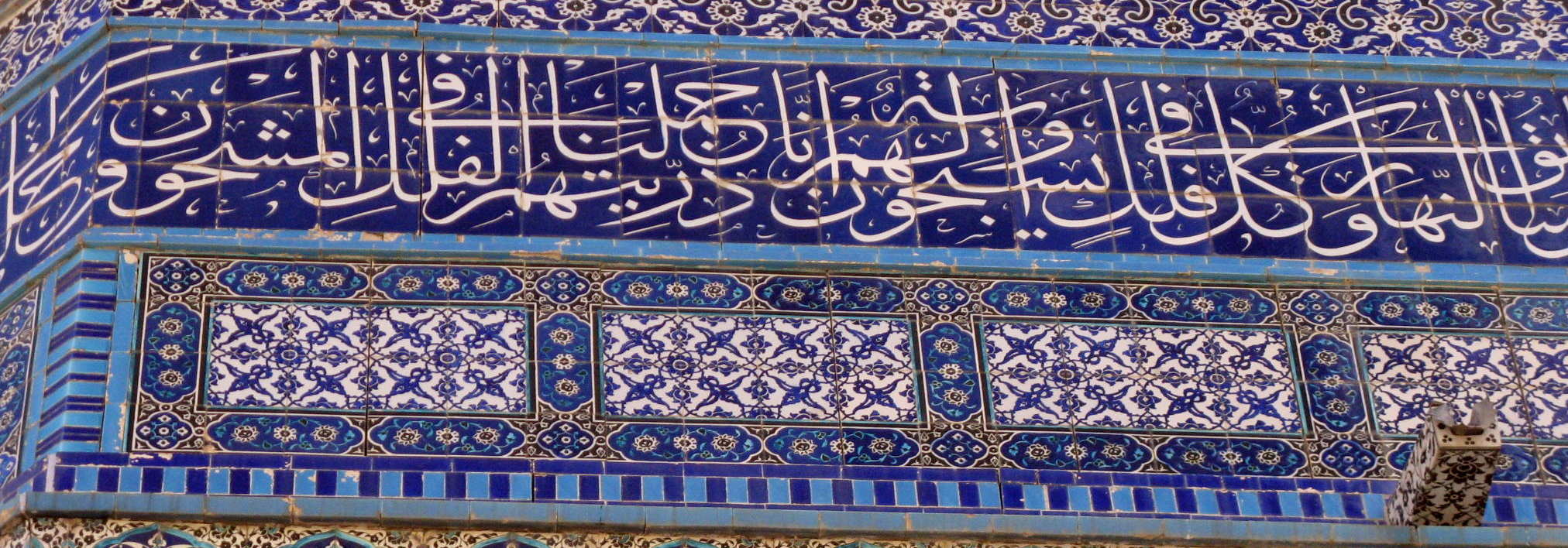
Links:
Our hotel, Dan Boutique
Elia Photo Services - a wonderful photographer whose father took pictures of Jerusalem in the 1930s and 40s